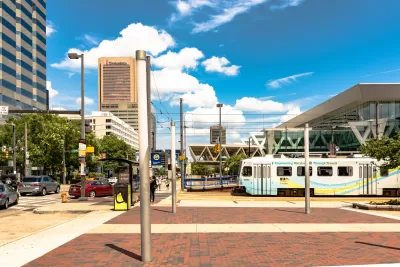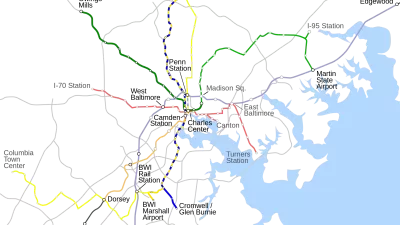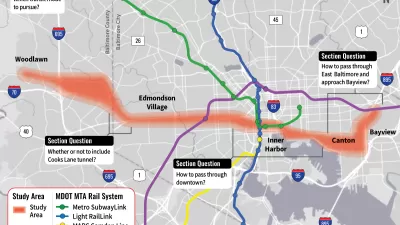The decision to go with light rail over bus rapid transit will be more expensive and take longer to complete, but proponents say it’s an investment in Baltimore’s economic future.

According to a Patch article by Megan VerHeist, Baltimore’s revived Red Line project will be a light rail system rather than bus rapid transit. Maryland Gov. Wes Moore made the announcement, which VerHeist reports “delivers on a key campaign promise made by Moore to revive the project canceled by former Gov. Larry Hogan.” The 14-mile, 19-station Red Line project will fill a gap in east-west transit service and link high-poverty neighborhoods along the proposed route to two key job hubs. It will be the first expansion of the city’s transit network in decades.
Critics of the project, including the former Gov. Hogan, who canceled the project in 2015, say it’s a waste of money. State officials estimate it will cost $3.2 to $7.2 billion to construct, and it will be years before they’ll be ready to break ground. The announcement also comes as “the state faces a major shortfall of transportation funding over the next five years, driven in part by the need to meet its obligations to Washington’s Metro system and to pay for the coming Purple Line in the D.C. suburbs,” an article in the Baltimore Banner reports.
FULL STORY: Light Rail Chosen Over Buses For Baltimore's Red Line Transit Project

Trump Administration Could Effectively End Housing Voucher Program
Federal officials are eyeing major cuts to the Section 8 program that helps millions of low-income households pay rent.

Planetizen Federal Action Tracker
A weekly monitor of how Trump’s orders and actions are impacting planners and planning in America.

Ken Jennings Launches Transit Web Series
The Jeopardy champ wants you to ride public transit.

California Invests Additional $5M in Electric School Buses
The state wants to electrify all of its school bus fleets by 2035.

Austin Launches $2M Homelessness Prevention Fund
A new grant program from the city’s Homeless Strategy Office will fund rental assistance and supportive services.

Alabama School Forestry Initiative Brings Trees to Schoolyards
Trees can improve physical and mental health for students and commnity members.
Urban Design for Planners 1: Software Tools
This six-course series explores essential urban design concepts using open source software and equips planners with the tools they need to participate fully in the urban design process.
Planning for Universal Design
Learn the tools for implementing Universal Design in planning regulations.
Ada County Highway District
Clanton & Associates, Inc.
Jessamine County Fiscal Court
Institute for Housing and Urban Development Studies (IHS)
City of Grandview
Harvard GSD Executive Education
Toledo-Lucas County Plan Commissions
Salt Lake City
NYU Wagner Graduate School of Public Service




























